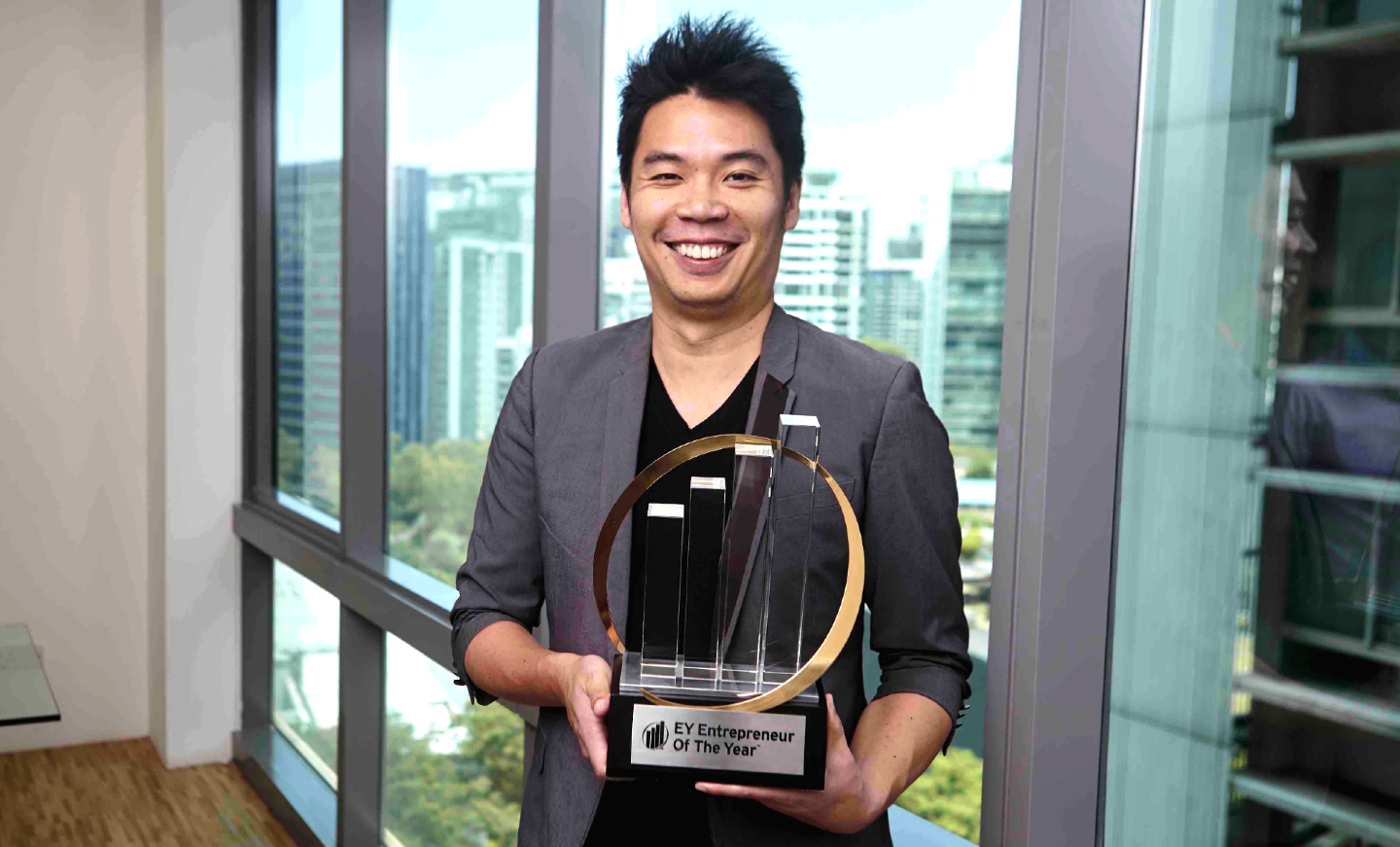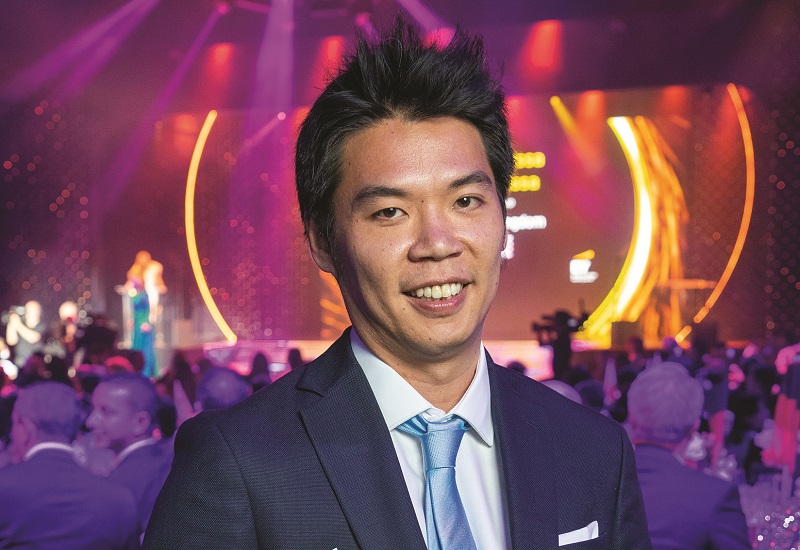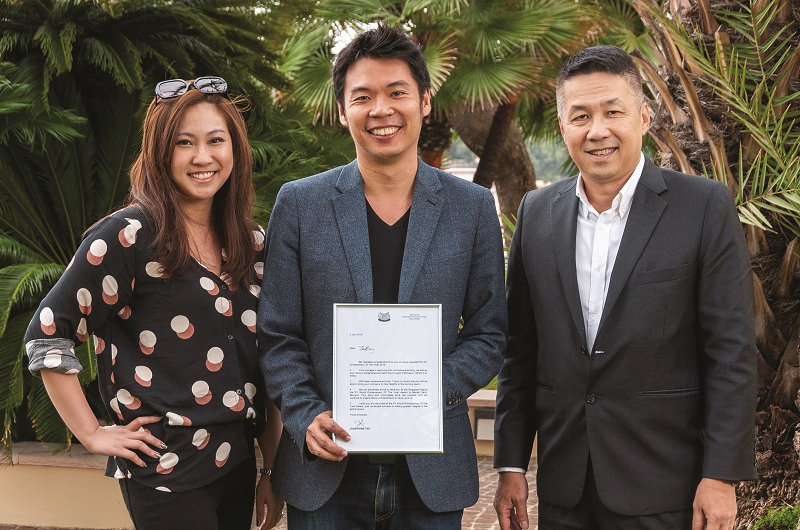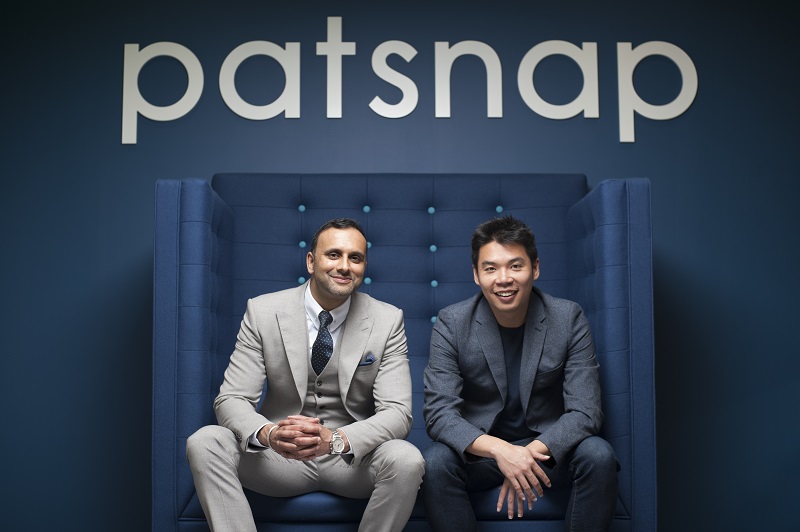
Jeffrey Tiong also won the EY Entrepreneur of the Year Singapore award in 2018 (Photo: PatSnap)
Malaysians are quick to claim credit for the success story of a fellow national, however tenuous their link to the triumph in question may be. But when Sabah-born Jeffrey Tiong contested for the EY World Entrepreneur Of The Year under Singapore’s flag, few could begrudge him the decision.
“Kota Kinabalu is a nice place for tourism but when I was growing up, there were no visible signs of entrepreneurship, apart from traditional endeavours like stalls selling food or crafts,” says the 34-year-old. “I was never exposed to that world. My dad was in business, but I had a bad impression of it from what I saw on TV and watching him. He would often come home late, stressed and red-faced. I had typical Malaysian ambitions, influenced by my parents: doctor, lawyer, engineer or accountant. Entrepreneurship wasn’t in my vocabulary until I went to Singapore.”
1111.jpg

While studying at the National University of Singapore (NUS), Tiong participated in an 18-month work-cum-study programme for entrepreneurially minded students in the US. Tiong attended Wharton School at the University of Philadelphia part-time and was assigned to full-time work at a medical device start-up, where he was tasked with due diligence on patents and intellectual property assets. For him, the convoluted world of legalese and technical jargon was difficult, without the added struggle of limited resources: The only free search tools available were government websites while access to professional databases could cost companies up to US$100,000 annually.
And thus the idea of PatSnap was born. Short for Patents in a Snap, it is an artificial intelligence software that enables users to navigate the research and development landscape affordably and with ease. Apart from consolidating patents and litigation data filed to eliminate accidental infringement, it also builds a roadmap of trends, allowing businesses and investors to see where innovations are heading.
“We’re really in the business of innovation intelligence, providing information on who is doing what and how users can best approach their own products and technologies, as well as identifying strong areas of investment. Innovation happens at such a fast pace these days and competition is global. Our system helps you keep track of things happening all over the world. It detects sources — from a professor in Cambridge to a start-up in Israel, translates documents and aggregates them, and advises you on how to best approach them for your relevant products,” says Tiong.
main_photo_a.jpg

“Trend analytics was part of the plan since its inception. Dyson launched a hairdryer three years ago, whose patents had been filed six years ago. This lets industry players know what technologies their competitors are working on. Apple, for instance, is now filing patents on electrical cars. This early-indication platform is useful for corporate clients, research universities and investors. The last use our tools to investigate things like patents and key inventors before they invest in portfolio companies. We are like the character, Q, who provides James Bond with the gadgets he needs to get the job done.”
We are speaking at the Hôtel de Paris in Monte Carlo, Monaco, a day before the EY World Entrepreneur Of The Year 2019 awards ceremony. During the official introduction at the palatial Opera Garnier two nights prior, Tiong cut an unassuming figure on stage in his jacket and jeans. During our interview, he is almost endearingly blunt, as candid about his failures as he is his successes. No one meeting him for the first time would guess that this Singlish-speaking young man runs a multimillion-dollar corporation with offices in five countries and a list of 8,000 high-profile clients, including NASA, Xiaomi, Vodafone and Quorn Foods.
“That stint in the US really opened my eyes,” he says. “Start-ups like Google, YouTube and Facebook entered my periphery, which changed my life. I returned to NUS to finish my last semester, incubating the idea of PatSnap for almost a year until I graduated. By then, I had the premise worked out exactly. I think I was ahead of the market by five or 10 years, and with current events like the US-China trade war, intellectual property transparency has never been more important.”
48019768687_ac9eaf8437_o1.jpg

PatSnap was founded in 2007 with a US$55,000 grant from NUS, a sum that did not go very far in Singapore. Tiong slept and showered in his office for six months, paying himself a monthly salary of S$500. By the following year, he was running out of money and moved to China for its market volume, cheaper labour and lower living expenses — a decision he credits as among his best.
Having attended a Chinese school in Sabah, he could speak and write Mandarin, which made the transition easier. He rented an apartment in Suzhou, a 30-minute high-speed train ride from Shanghai. With a team of seven, he lived in and worked out of this studio while applying for a variety of funding, including a RM150,000 grant from the Malaysia Digital Economy Corporation. A breakthrough came in 2010 when venture capital firm Accel-X and NUS Enterprise invested US$900,000, allowing them to develop PatSnap’s Global Patent Analytics Database. Tiong returned to Singapore to pitch it to potential clients, signing on the Agency for Science, Technology and Research (A*STAR) and NUS, both of whom remain subscribers today.
“One of the toughest challenges I faced was in 2014,” he shares. “We had almost run out of money again and I was pitching for more funding around Silicon Valley and Europe with an angel investor. It had been a hard and tiring trip, and when we returned to Singapore, we got into an argument. He told me I wasn’t fit to be a CEO because I was too much of an open book. ‘You need to act confident in front of investors, convince them you know better than they do.’ That really hit me hard because someone I had so much respect for didn’t think I was capable.
“Over the years, I realise that everyone has a different approach to leadership,” adds Tiong, who employs 700 people across offices in China, Singapore, London, Toronto and Los Angeles. “Mine is authenticity — I’m going to be myself. I admit it when I don’t know something or when I screw up, and I think that builds trust. It must be working, too — we raised close to US$100 million, with investors such as Sequoia. But I also learnt that I cannot always openly share my concerns and have to keep a positive attitude for the team. There must be a balance.”
jtrc_patsnap_couchdsc_1236.jpg

Although the company has grown a hundredfold since its establishment, it maintains its start-up mentality, following massive organisations such as Uber. “We have to be entrepreneurial and agile. We are currently looking at leveraging our use of AI. PatSnap analyses hundreds of millions of long, mundane texts extracted from scanned documents, and we will use machine-learning to summarise, analyse and translate them into various languages. We also want to specialise in various life science industries as each has its own jargon, and help connect the dots within and among industries where we can. We are innovating these technologies as we go.”
Although he dismisses his apparent success, claiming it is a long way away, Tiong credits his progress thus far to grit and curiosity.
“One keeps you on the journey while the other opens up new paths,” he says. “Someone once told me that whatever you do, stick it out for at least five years. The first two years on a job are typically spent testing the waters. The third year is when you begin to see the consequences of your actions and you then set about correcting and refining them. Staying the course is how you grow.”
Although the title eventually went to US country winner Brad Keywell, Tiong is gratified to have represented Singapore on the world stage. “I started in Singapore and, to be frank, without NUS and the Singapore government, PatSnap would never have happened. They invested in me in so many ways and I am very grateful.”
This article first appeared on July 15, 2019 in The Edge Malaysia.


